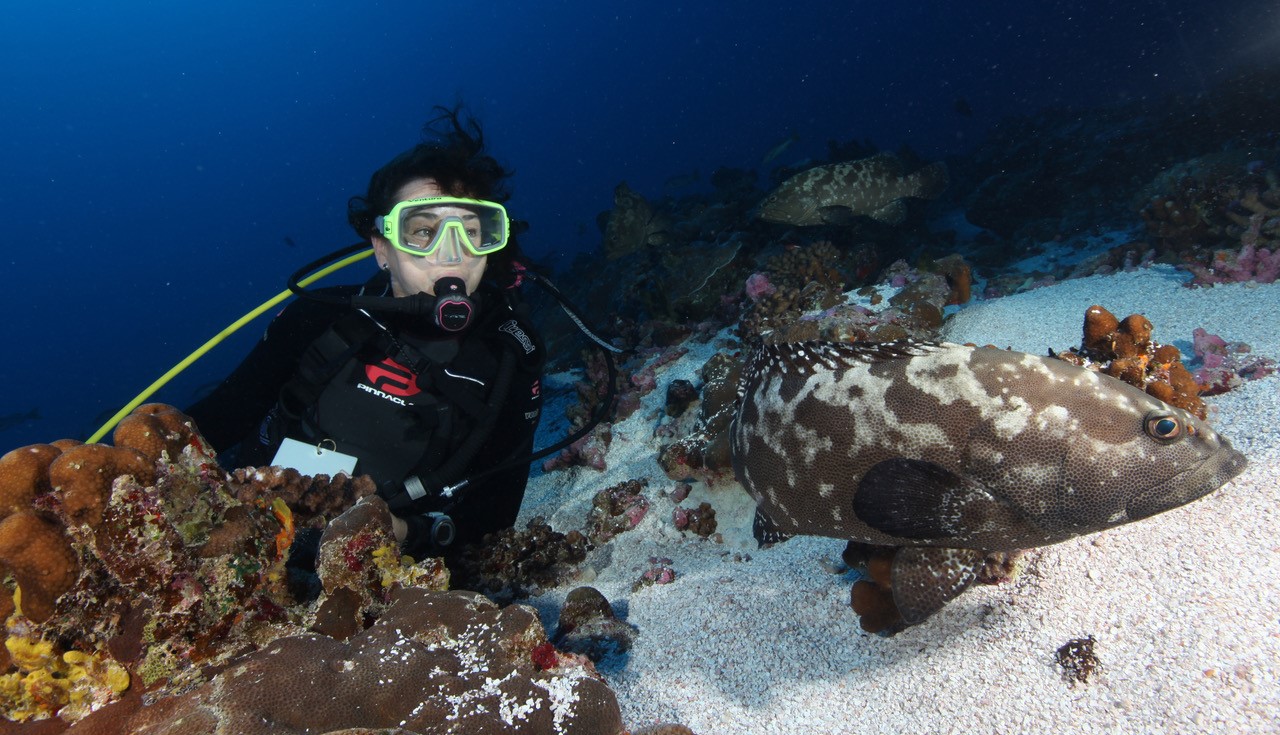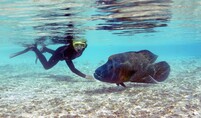
As general KE and impact categories that are also closely linked and complementary to my following two major research themes recently and currently, I continue in two roles that support research and outreach broadly and impact species widely in the two taxa, groupers and wrasses (Epinephelidae and Labridae). These are international roles that I have held for more than a decade.
Founder and co-chair of the IUCN Groupers & Wrasses Specialist Group
http://www.iucn.org/ssc-groups/fishes/grouper-and-wrasse
Co-founder and Director Science and Conservation of Fish Aggregations
Many medium to large reef fishes form brief spawning aggregations in the same locations each year. If exploited and unmanaged, these can be rapidly decimated, threatening the fish population and the fisheries that depend on them. Our work aims to study them to provide scientific information that enables these vulnerable to be managed effectively and efficiently and continue to support the many coastal communities that depend on them around the tropics and the valuable international trade of many species.
This publication (2020) is one of few to show the start of recovery in a successfully managed aggregation.

Yvonne was featured in BBC's recent Blue Planet 2 series, Episode 3, for her work at the largest known camouflage grouper aggregation in the world, in French Polynesia.
In the tropical western Atlantic, Yvonne and co-authors have just completed a fishery management plan for 2 aggregating species of conservation concern, the Nassau grouper and mutton snapper, the for FAO/western Atlantic region. It has just been approved and the communication strategy is the first output to support the plan can be seen in the following 3.5 minute film released 2021 (three languages).
Nassau Grouper Against The Clock: A call to action to protect Nassau Grouper
The Napoleon wrasse, Cheilinus undulatus, was the first reef food fish to be listed on CITES App. II in 2004 and Indonesia is the major exporter, with Hong Kong the major importer. A decade of work in Indonesia examines the outcomes of the CITES listing and explores ways to improve enforcement of the listing. These include a management plan developed with FAO and, most recently, population surveys and a novel approach of using facial recognition, based on the complex facial patterning in this species, to distinguish between legal and illegal imports.
Recent publications:

